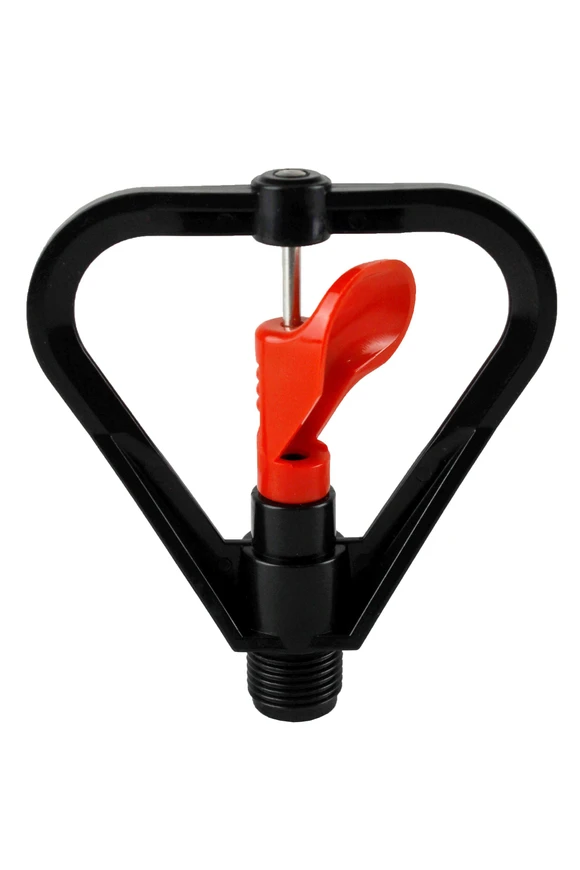Overhead Sprinklers For Irrigation
Grekkon Limited is an irrigation equipment supplier in Kenya. We design, supply, and install all types of overhead sprinklers for irrigation systems, for every acreage and crop. Our overhead sprinklers for irrigation in Kenya are of different types, for different crops, acreage and locations. This is why our technical or agronomy team will visit a grower who needs to install one
It is to assess the land layout and size, topography, water location, water volume, existing water pump if any, and the crop. Through this survey, we recommend the most appropriate sprinkler irrigation kit for the grower based on their budget. For instance, a grower with 100 acres of orchard will have a different sprinkler from a 100 acres of a park covered with grass. Similarly, a farmer on an 1/8 acres of cabbage will have a different sprinkler irrigation kit than the one with 30 acres of cabbage
Overhead Sprinklers For Irrigation
Types
We have these 5 overhead sprinklers for sale types shown below available. For most, there are both metallic and plastic versions. Metallic sprinklers have a longer lifespan, but are costlier and heavier. Plastic sprinklers are lighter, cheaper, but have a shorter period of operation. The body material does not affect the pressure rating, inlet and outlet sizes or the water discharged. For technical details on each type, click on the title links given for every sprinkler
- Rain gun sprinklers for medium-sized to large acreage. Available sprinkler sizes are; 1″, 1-1/4″, 1-1/2″, 2″, and 2.5″. We supply and install the double nozzle PY, Atom, and flange type rain guns. The latter are for broad acreage and require very high water volume, and high operating pressure
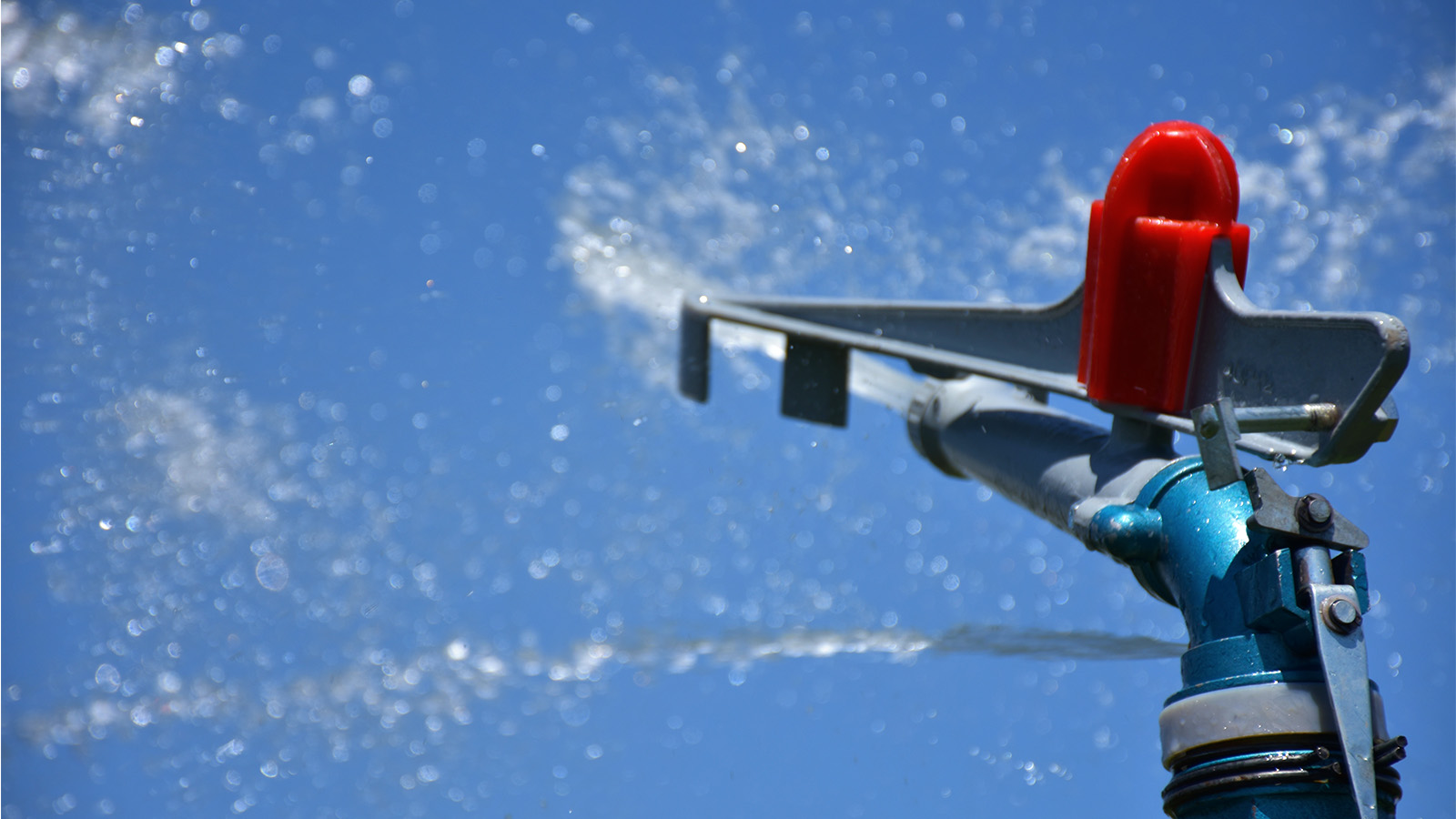
An ordinary size rain gun sprinkler at work after installation by Grekkon Limited

2.5″ giant flange type rain
A flange type rain gun video at work
2. Plastic or brass impact sprinklers for small to medium sized acreage. Our sizes are; 1/2″, 3/4″ and 1″ which have either 2-way, 3-way or 4-way nozzles
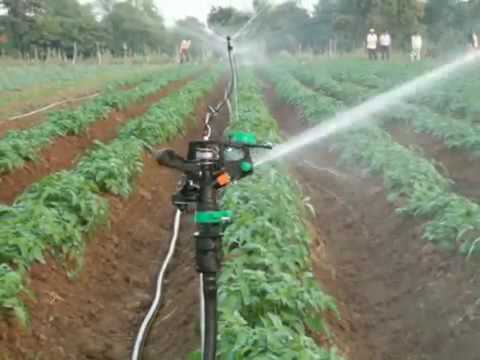
Plastic impact sprinklers
3. Mega-net sprinklers for small to medium-sized areas. We have the 1/2″, 3/4″ and 1″ which have a spray angle of 180 degrees
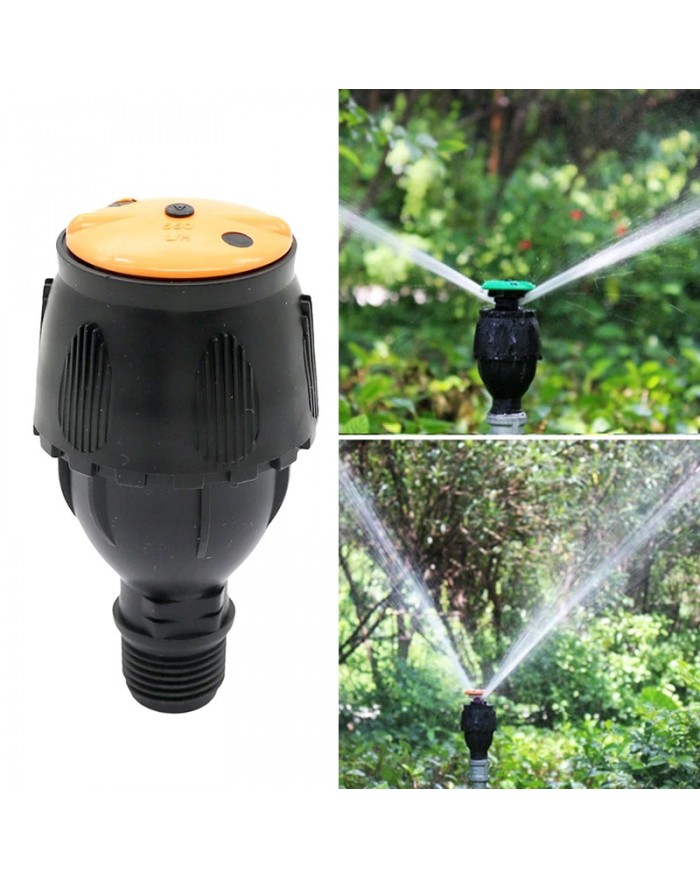
A mega net sprinkler
4. Micro sprinklers for orchards and small areas with a spray angle of 360 degrees
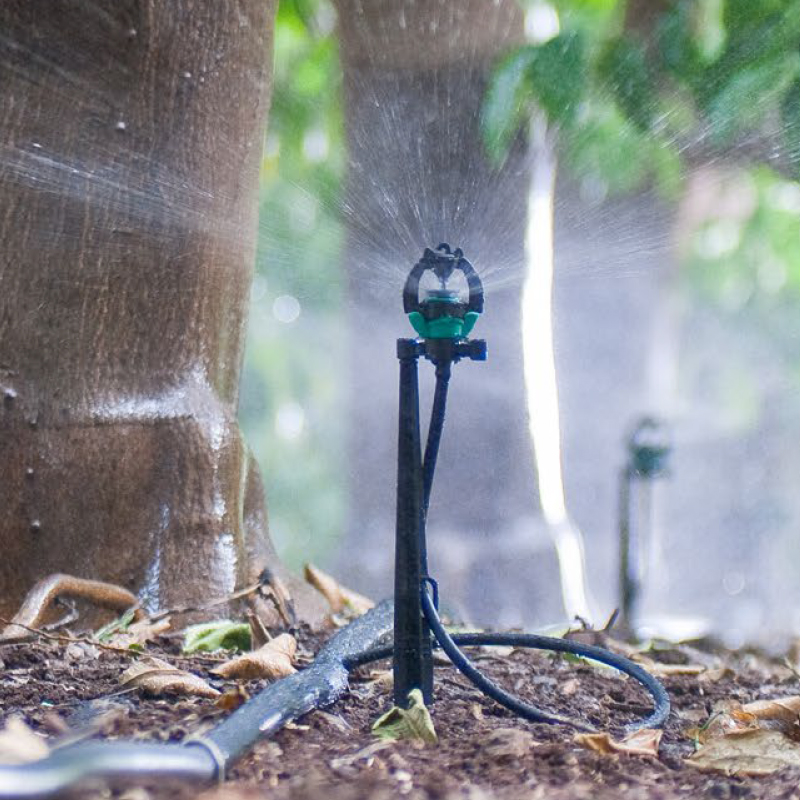
Micro sprinklers in an orchard
5. Pop up sprinklers for lawn irrigation. Our sizes are1/2″ and 3/4″ which spray up to 360 degrees

A lawn pop up sprinkler
6. Butterfly mini sprinklers for small gardens or and lawns available as 1/2″
How to choose your overhead sprinklers in Kenya
- Land size. Rain guns for large acreage, and micro-sprinklers for small plots of land
- Crop type. Pop-ups for lawn irrigation, all other sprinklers for field crops
- Ground elevation. Gravity power from high elevations will swing micro and impact sprinklers. Rain guns, Meganets, and pop-ups work with water pumps
- Grower’s budget. It determines the sprinkler type and number of units to install
Our sprinkler irrigation system design considers the above 4 factors during our site visits conducted before a sprinkler irrigation system is installed
Components of an overhead sprinkler irrigation system
- Mainline. This is PVC, HDPE, or GI to supply water from the source. It will be connected directly to the sprinkler riser pipe, or to the sub-main line
- Sub mainline. This one is connected directly to the sprinkler rise pipe, or to the sprinkler itself from the mainline. It is also PVC, HDPE, GI or a delivery/ layflat pipe
- Riser pipe. This receives water from the main line or sub-main line to the sprinkler It is also PVC, HDPE, or a GI
- Tripod or pipe stand. It is the sprinkler’s support structure
- Gate valves. They allow or block water flow to the sub mainline
Overhead sprinkler prices in Kenya per acre
- Rain gun sprinkler system from Kes 65,000
- Impact and Mega-net sprinklers from Kes 50,000
- Butterfly and Micro jet sprinklers from Kes 85,000
- Pop-up sprinklers from Kes 120,000
FAQs
A. What are the pros and cons of an overhead sprinkler irrigation?
I. Overhead sprinkler irrigation advantages
- There is a wide choice to select from
- It is easy to install
- It is cheaper than drip irrigation
- Easy to move from one point of the farm to another
II. Disadvantages
- It is water wasteful
- During strong winds, water distribution is uneven
- High running cost because a water pump is needed
- It requires labour to move it from one location to another if it’s a portable system
B. How does an overhead sprinkler irrigation system work?
- Water is pumped under high pressure from the source; tank, reservoir, lake, river to the mainline
- From the mainline, it is distributed to the sub-main lines
- From the sub-mainlines, it enters the sprinklers under pressure. This pressure swings the sprinkler in a circular motion
- The sprinkler breaks the water into fine droplets, which fall on the crop
C. How do I choose a water pump for my sprinkler system?
Consider the following when selecting a sprinkler water pump
i. Pressure rating of the sprinkler. The water pump’s pressure rating must exceed that of the sprinkler to compensate for pressure losses in the piping system. Grekkon Limited’s technical team advises growers on the best match. The larger the pipe diameter, the lower the pressure loss along the horizontal pumping distance. The longer the horizontal and vertical pumping distance, the greater the pressure loos. Pressure loss during irrigation water reticulation is also as a result of leakages along the piping system
ii. Discharge rate of the sprinkler. Like the pressure rating above, this will be higher for the water pump to cater for any fluid losses
iii. Inlet diameter of the sprinkler. That of the pump has to match this
D. Which sprinkler head is best?
Rotor sprinklers are the most efficient sprinklers in the market. They have the least run-off, and irrigate slowly, hence less wastage
Related Posts

Types Of Sprinkler Irrigation Systems
Grekkon Limited's has all types of sprinkler irrigation systems for agriculture. From the giant flange type rain guns, to the tiny micro...
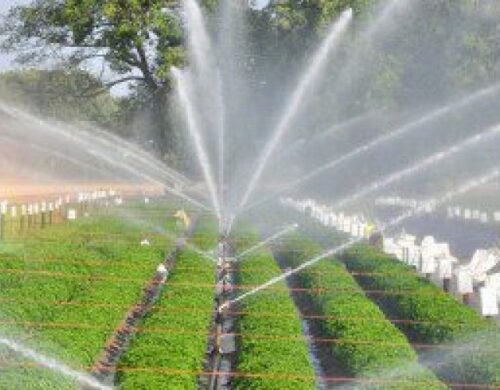
Water Sprinklers
Water sprinklers for sale in Kenya by Grekkon Limited are categorised by size. The sprinkler size determines the place of use, as a result of...

